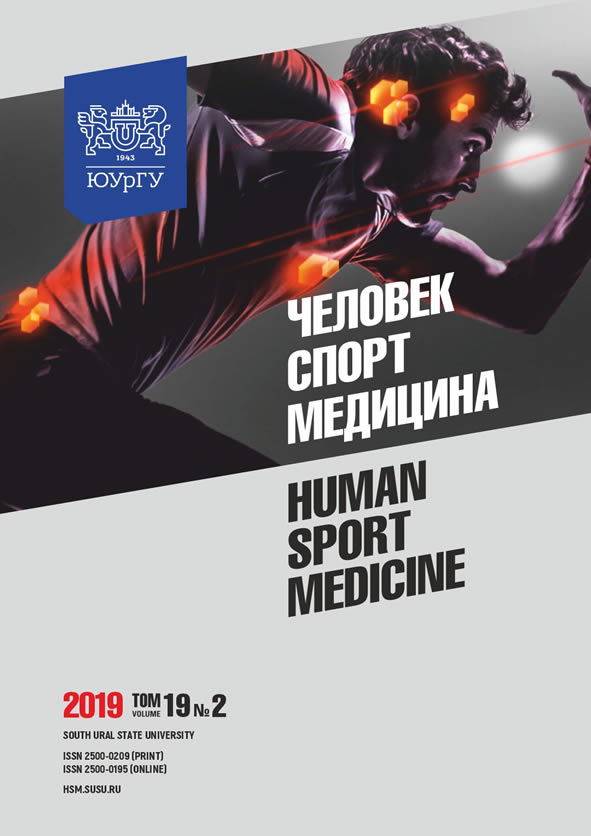PSYCHOPHYSIOLOGICAL STATUS IN OVERWEIGHT INDIVIDUALS
Abstract
Aim. The article deals with establishing psychophysiological features in overweight women to develop a set of measures for weight decrease and psychocorrection. Materials and methods. We studied two groups of women who were willing to participate in the study: the first group – mean age 54.2 ± 3.0; the second group – mean age 25.0 ± 1.7. The average BMI of the first group corresponded with obesity values (32.3 ± 1.6), while an average BMI of the second group was within the upper limit of reference values (23.7 ± 0.9). However, according to body composition data, there was a risk of BMI increase. As far as the percentage of adipose tissue exceeded the recommended values, recommended weight loss was 18.2 ± 2.6 kg for the older group and 5.6 ± 1.4 kg for the young group. Two groups of women of the same age with normal weight were examined as control groups. Results of the study revealed both age-related and psychophysiological features in women of different weight. EEG analysis showed that alpha rhythm amplitude in women from the first group was higher on average and frequency was lower compared to the second group. In the experimental group, we also revealed a higher level of delta activity in the frontal region at rest. The study of a psychoemotional status revealed that all participants hardly coped with stress. However, young participants overcame stress more easily compared to the older group. Anxiety assessment showed increased values of anxiety. In all participants, personal anxiety was almost at the same level within 48 points. Situational anxiety was higher in young women (51.2 ± 1.3 and 49.6 ± 2.1 points, respectively). Conclusion. The most psychophysiological indicators identified functional stress, particularly in overweight older women. To preserve the optimal psychophysiological status of persons participating in weight correction programs, it is also necessary to correct a psychophysical status in accordance with age-related features.
References
References on translit
Copyright (c) 2019 Human. Sport. Medicine

This work is licensed under a Creative Commons Attribution-NonCommercial-NoDerivatives 4.0 International License.















